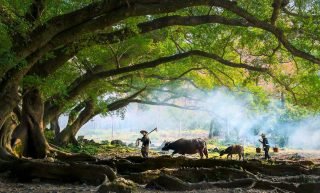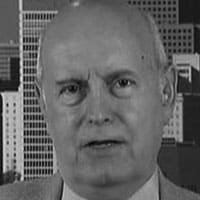DISCLOSURE: Sourced from Russian government funded media
by Dmitry Bokarev, with New Eastern Outlook, Moscow, and the Institute of Oriental Studies of the Russian Academy of Sciences, a research institution for the study of the countries and cultures of Asia and North Africa.
Update: Rally videos added…different from what we are used to.
[ Editor’s Note: These annual Silk Road races have become an effective PR staple for the countries involved. With no NATO borders involved, the attention helps spur the national pride of some of the old Soviet Union states that tend to be ignored by world media, as they have so little to do with the West.
The idea of building stronger national bonds between powerhouse countries and those with much smaller economies is really a no brainer.
Their futures are all intertwined with the common need for internal transportation infrastructure within their combined national areas, which for China is a huge land mass. After the transportation is in place, the development can proceed at a more rapid pace.
With the EU and US basically ‘built out’, the last thing they want to see with an already economic powerhouse in Asia is its potential to double and quadruple its economy while the allegedly superior West would be doing what?

There is also another big beneficial reason. This land mass is also a geopolitical target of the US and NATO with announced plans to move their military forces, particularly those that have a first strike capability, closer to the respective borders of these countries.
Their long term defensive posture requires a retaliation response in areas that are hard to reach, which allows for rings of anti-missile defense.
And last, such a project requires harmonious relations, huge amounts of money and lots of time. The strategy of their adversaries is to derail harmonious relations and create as much economic turmoil as possible so that less is available for these mega development projects.
As Gordon would say, “Welcome to how the world really works”. And what I say, after preparing this for today, is that those Russians have some bad ass trucks… Jim W. Dean ]
 Jim's Editor’s Notes are solely crowdfunded via PayPal
Jim's Editor’s Notes are solely crowdfunded via PayPal
Jim's work includes research, field trips, Heritage TV Legacy archiving & more. Thanks for helping. Click to donate >>
First published … August 03, 2021
Any large-scale cultural or athletic event represents an opportunity for the countries participating in it to make a name for themselves, to showcase their achievements, and to attract various partners.
On top of that, international festivities and competitions show the state of relations between the states that participate, and contribute to fostering these relations – even in areas that are far removed from athletics or cultural aspects – turning into platforms for high-level meetings and negotiations.
One of the athletic events that reflects the state of international relations across the expanses of Eurasia is the Silk Road Rally.
This is a motor rally that lasts many days across the territories of Russia and other countries in Eurasia. Teams from different countries compete to see who will take first place in completing a route that stretches several thousand kilometers. Part of the path is cross-country, and part of it lies along public roads.
Participants must comply with all traffic rules while on those roads, and a real “race” only becomes possible along certain sections of the route. That is why not only high-speed driving skills are important to win, but also the ability to manage time and stick to a schedule. The competition is held in several categories: off-road vehicles, trucks, motorcycles, and ATVs.
For the first time, the Silk Road Rally took place in 2009 across the territories of Russia, Kazakhstan, and Turkmenistan. In ancient times, these countries were connected by the Great Silk Road. The rally was given its name in memory of the ancient “Eurasian integration project”.
Even then, those who initiated the competition – the leaders of the above-mentioned countries – stated that the rally was a symbol of the long-standing, strong relations that link three peoples and their three states.
Athletes from 25 countries and 71 motor vehicles took part in the first Silk Road Rally: back then, only off-road vehicles and trucks competed. Starting off in Kazan (in the Russian Federation), the rally passed through the Kazakhstani cities of Uralsk, Beyneu, and Zhanaozen, then through the Turkmen city of Turkmenbashi, and ended in the capital of Turkmenistan, Ashgabat.
The length of the route was more than 4,600 kilometers, and more than one third of this distance ran across terrain that involved difficult conditions. For the eight days of the race, athletes traversed the Ustyurt and Karakum deserts.
Spain won in the “off-road vehicles” category in 2009, and the Russian Federation team KAMAZ-master, which drives the cars manufactured by the Russian KAMAZ plant, and regularly demonstrates the capabilities these vehicles possess at various competitions, took first place in the “trucks” category.
As far as the political component of the event mentioned above goes, the first Silk Road Rally reflected the need for further Eurasian integration, which was long overdue at that time. Two of the three countries that set up the rally, Russia and Kazakhstan, had already been cooperating in this area for eight years as part of the Eurasian Economic Community (EurAsEC).
Besides that, the rally itself indicated the path through which integration would be achieved: creating a unified transport system that spans the entire continent where a well-developed network of highways plays an important role.
Russia and EurAsEC were not the only two forces that spoke out in favor of integration. China also set that as its objective.
In 2013, Chinese leader Xi Jinping, while he was in Kazakhstan, launched the New Silk Road initiative, one that implied the transport and economic integration of Europe and Asia via the creation of a single continental transportation system that combines old and new land routes, including both railways and motor roads. This means that the Chinese initiative was in keeping with the ideas espoused by the EurAsEC.
And both sides referred to the Great Silk Road as an example to illustrate how Europe and Asia were connected thousands of years ago, and one thanks to which the athletic event and Chinese initiative were given similar names. This kind of coincidence could have remained unnoticed, and since 2016 China has begun to take an active part in the Silk Road Rally, and setting it up.
Starting off in Moscow, the Silk Road – 2016 Rally was 17 days and went over 10,700 kilometers, and finished in Beijing. At that time, athletes from 41 countries took part in the race. And since that time, the rally’s emblem has been the Chinese White Tiger.
The special anniversary Silk Road – 2019 Rally started off in Irkutsk (in the Russian Federation). It was then that categories like “motorcycles” and “ATVs” first appeared in the competition. The route ran through the territories of Russia, Mongolia, and China.
After passing through the Siberian boreal forests, the Mongolian steppe, and the Gobi desert, the athletes completed their journey in the city of Dunhuang (in the PRC). Back then, the Russian crews from KAMAZ-master took first, second, third, and fourth places in the “trucks” category. TV channels in 190 countries broadcast the motor rally in 2019.
It was anticipated that in 2020 the Silk Road Rally would experience no less success, and would help Russia, China, their plans for Eurasian integration, and the manufacturers of the cars participating in the rally all gain more popularity.
In addition, it would be possible to count on development for the tourism industry in those locations through which the motor rally would pass. However, in 2020 the planet was swept by the COVID-19 pandemic, and the Silk Road 2020 Rally was canceled.
In 2021, when there was hope for protection from this dangerous infectious disease thanks to new vaccines, they decided to hold the rally. The new route, one more than 5,400 kilometers long, initially included ten stages, and ran through Siberia, Gorniy Altai Region (in the Russian Federation), and the Mongolian part of the Gobi Desert – and was supposed to end in the capital of Mongolia, Ulaanbaatar.
The motor rally began on July 1. The heat in the region made the competition particularly difficult. The KAMAZ-master team came out on a new vehicle that was mounted on a chassis belonging to the newly released generation of KAMAZ K5 trucks.
Unfortunately, soon after the start of the rally the sad news broke that Mongolia had recorded a new outbreak of coronavirus, and bubonic plague, something which has been the scourge of this region for many centuries.
Because of that, the medical staff headquarters for the Silk Road decided to cut the route the rally took by almost half, excluding the Mongolian section from it. Instead, an additional three stages were held on the territory running through Gorniy Altai Region. The race ended on July 6 in the capital of Region, Gorno-Altaysk (in the Russian Federation).
Despite the shorter route, Silk Road 2021 was still an unforgettable adventure for athletes, and a wonderful sight to behold. The struggle between two recognized leaders in the “trucks” category, the Russian team KAMAZ-master and the Belarusian team MAZ-SPORTauto, which represented the Minsk Automobile Plant (MAZ), turned out to be very interesting. The winner in the truck race was KAMAZ-master, once again, and Belarus took second place.
The Silk Road Rally is still one of the most high-profile events of its kind in Eurasia. It draws attention to the problems with international transportation links in the region, demonstrates the achievements of the automobile industries in participating countries, and helps test new technologies in very complex conditions.
Most important, the Silk Road bolsters cooperation between Russia, Central Asian countries, Mongolia, and the PRC and helps maintain friendly relations between the peoples in these countries.
The new vaccines that are being developed around the world give rise to hope that soon the COVID-19 pandemic will be brought under control, and when this happens it can be expected that the Silk Road Rally – and other, similar events – will develop further, reaching unprecedented proportions and every year making an increasingly positive impact on life in the region.
Dmitry Bokarev, political observer, exclusively for the online magazine “New Eastern Outlook”.

Jim W. Dean is VT Editor Emeritus. He was an active editor on VT from 2010-2022. He was involved in operations, development, and writing, plus an active schedule of TV and radio interviews. He now writes and posts periodically for VT.
ATTENTION READERS
We See The World From All Sides and Want YOU To Be Fully InformedIn fact, intentional disinformation is a disgraceful scourge in media today. So to assuage any possible errant incorrect information posted herein, we strongly encourage you to seek corroboration from other non-VT sources before forming an educated opinion.
About VT - Policies & Disclosures - Comment Policy




Nice rally! KAMAZ team is doing great. Thank you, Mr. Dean!
Just found some videos to add…just fabulous helicopter footage and a huge variety of shots on the ground. Talk about no man’s land. There is nothing out there. No word about injuries, which I would expect from the bike guys.
I liked the video! In general, this rally is the endurance of cars and people. Hard work of professionals, mutual assistance. Somewhere on the network, I saw a video where this multi-ton KAMAZ car rushed along the highway at a speed of about 200 km / h. In these rally KAMAZ vehicles, almost all units and parts are assembled from the world’s best manufacturers.
Those are bad ass trucks, Jim.
Nothing better than a gathering of gearheads to transcend politics, culture and ethnicity in the furtherance of racing their vehicles.
It would make good TV, too.
Comments are closed.